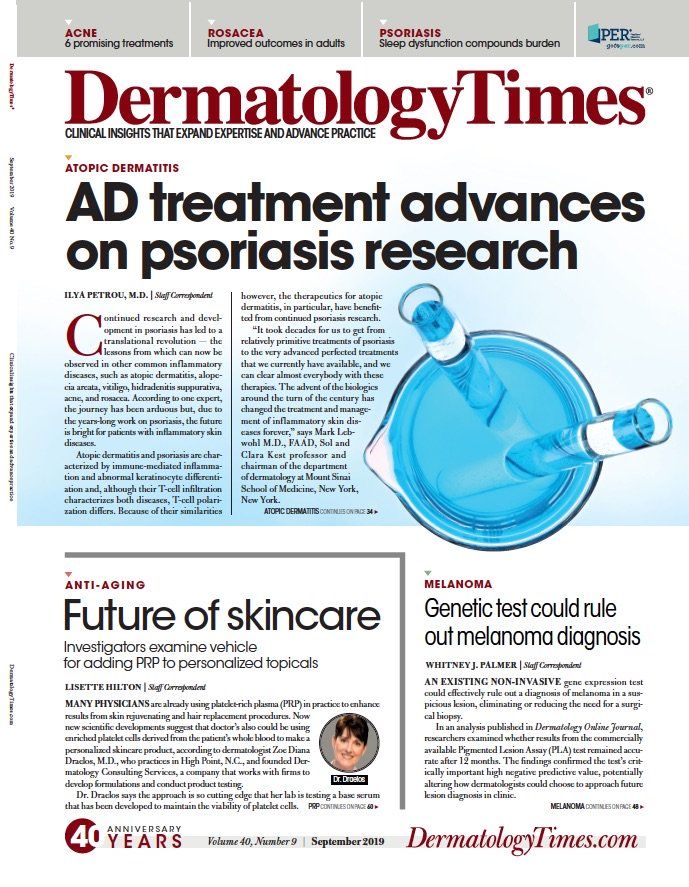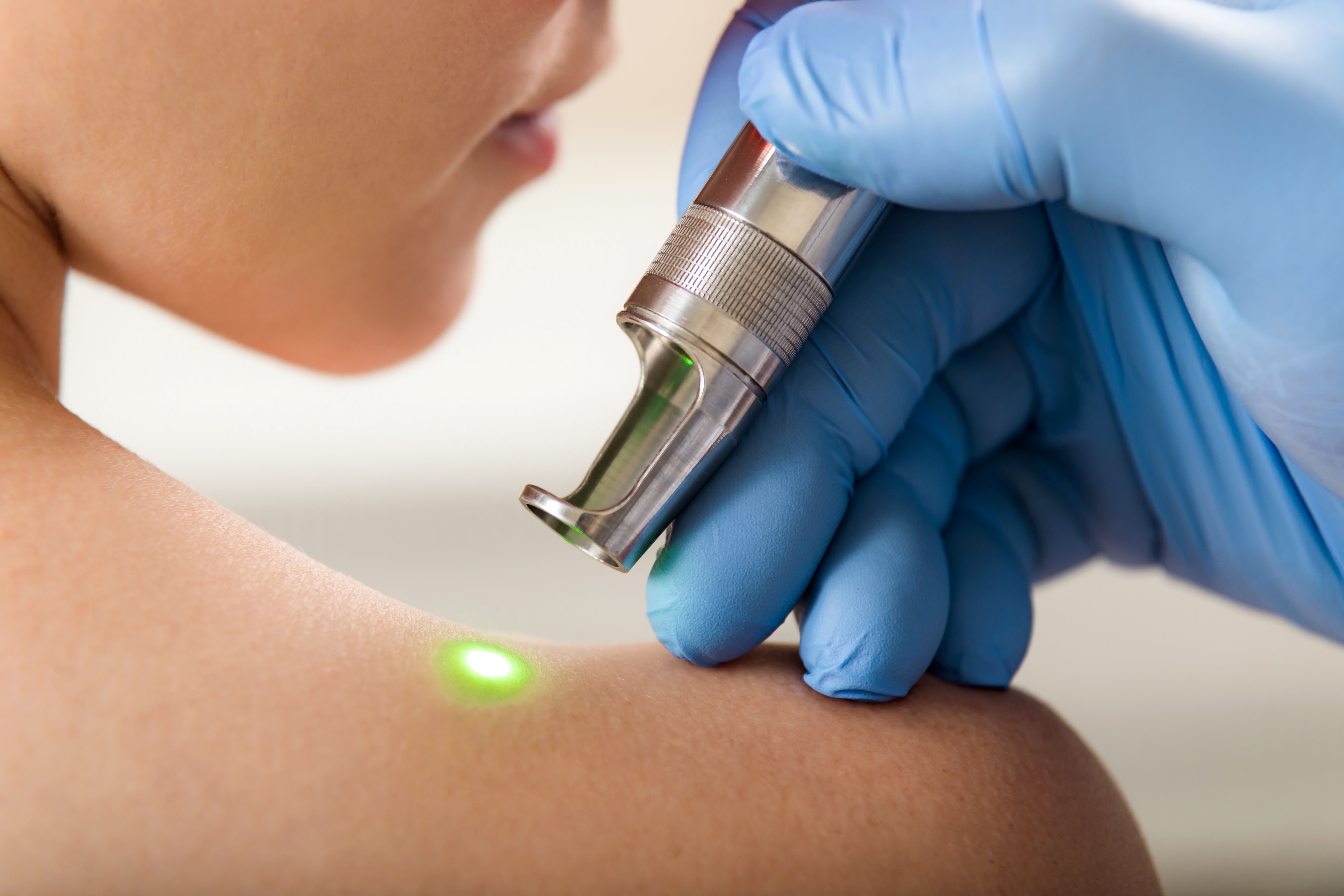- Case-Based Roundtable
- General Dermatology
- Eczema
- Chronic Hand Eczema
- Alopecia
- Aesthetics
- Vitiligo
- COVID-19
- Actinic Keratosis
- Precision Medicine and Biologics
- Rare Disease
- Wound Care
- Rosacea
- Psoriasis
- Psoriatic Arthritis
- Atopic Dermatitis
- Melasma
- NP and PA
- Skin Cancer
- Hidradenitis Suppurativa
- Drug Watch
- Pigmentary Disorders
- Acne
- Pediatric Dermatology
- Practice Management
- Prurigo Nodularis
- Buy-and-Bill
Publication
Article
Dermatology Times
Let’s talk about melasma
Author(s):
Experts offer their treatment tips and protocols for melasma prevention and management.
Dr. Friedmann

Dr. Pruett

Dr. Linkner

Ms. Stassiy

Understanding melasma risk and how best to prevent and treat the skin condition has many dermatologists scratching their heads. While management and treatment hurdles remain, there is a growing arsenal of melasma remedies at dermatologists’ disposals.
For now, there is no way to prevent melasma outright, but it can be treated and controlled, according to dermatologist Daniel P. Friedmann, M.D., Westlake Dermatology and Cosmetic Surgery, Austin, Texas.
The Making of Melasma
Patients at most risk for melasma are female - especially those who are pregnant, on oral contraceptives or hormone supplementation, according to Dr. Friedmann.
“This is because a high estrogen environment is essential to trigger melasma. While estrogen may be the spark the ignites this chronic condition, ultraviolet radiation (potentially in combination with visible light and infrared radiation) is the fuel that keeps the fire going,” Dr. Friedmann says.
It’s difficult to predict who will develop melasma, according to Calabasas, Calif., dermatologist Anna Guanche, M.D.
“It usually starts in your late 20s or early 30s and then progresses. Although all skin types may develop it, types III through IV can have the most difficult time camouflaging the robust pigment that develops,” Dr. Guanche says.
Some studies suggest other potential causes or associations, including thyroid disease and genetic influences, according to Lisa Guidry Pruett, M.D., a dermatologist with U.S. Dermatology Partners, Carrollton, Texas.
Prevention and Treatments Tips
The most important thing to do to prevent melasma is to minimize skin stress, according to Dr. Pruett.
“This means cover up and seek shade, wear tinted sunscreen that will protect against UV radiation, but also infrared and [high-energy visible (HEV) radiation,] and apply antioxidants to the skin. There is also good science behind ingesting polypodium leucotomos orally,” Dr. Pruett says.
Dr. Pruett’s first-line treatment includes a tinted sunscreen like EltaMD UV Elements (EltaMD), an antioxidant like [SkinBetter Science’s Alto Defense Serum] and a prescription topical cream that includes hydroquinone and kojic acid. She recommends patients ingest polypodium leucotomos orally twice daily to improve melasma.
“For patients that want to take it a step further, I’ll recommend a series of SkinPen microneedling [Bellus Medical] treatments with topical tranexamic acid or Dermalinfusions [Envy Medical] along with the topical regimen,” Dr. Pruett says.
According to Dr. Friedmann, treating melasma rests on two factors: sun protection and avoidance and arrest of the skin's pigment production pathways.
“Sunscreen, reapplied every two to three hours, is the simplest and often most cost-effective option,” Dr. Friedmann says.
The problem is patients typically apply sunscreen, then makeup and do not reapply during the day, which provides only a small, brief fraction of sun protection, according to Dr. Friedmann.
Dr. Friedmann recommends Colorescience's Sunforgettable brush-on sunscreen, which he says helps women wearing makeup to maintain sun protection throughout the day. For women who don’t wear makeup, Dr. Friedmann recommends SkinMedica's Total Defense and Repair sunscreen, which provides simultaneous protection against both ultraviolet and infrared radiation.
Dr. Guanche recommends sun protection with an SPF greater than 40 daily and 60 when outdoors.
“I have found that a cosmetic primer can augment the effects of the sunscreen by making it stay put. Dermablend makes a sticky jelly primer that I love to recommend. Also, [I recommend] brighteners such as glycolic and azelaic acid for daytime, and hydroquinone with isotretinoin and kojic acid at night time,” Dr. Guanche says. “Of course, avoidance of sun and heat is important, and possible change or discontinuation of oral contraceptives is only sometimes helpful. We offer superficial chemical peel series and shallow microneedling with active ingredient smears in conjunction with the skincare regimen.”
Dr. Guanche also recommends what she calls “micro peel pads” by ZO. These have glycolic in them to provide daily exfoliation.
“This should be done only in conjunction with strict sunscreen use. Otherwise there is a risk of worsening the condition,” Dr. Guanche says.
Dermatologist Rita Linkner, M.D., of Spring Street Dermatology in New York City, says dermatologists should ideally recommend a sunscreen with an infrared blocker like Alastin's Hydratint, which blocks infrared heat energy. New research suggests infrared heat energy is associated with skin discoloration and aging, she says.
Dr. Friedmann says that by preventing new pigment from forming, existing pigment will gradually improve.
“The gold standard [for this] is hydroquinone cream. At low concentrations, it is exceptionally safe and associated with only mild irritation. While the addition of tretinoin or a mild acid may improve the effect, it often leads to a significant increase in irritation and decrease in patient compliance with use of the product,” Dr. Friedmann says. “I often recommend twice-a-day use of hydroquinone 4% cream and SkinMedica's Lytera 2.0, the latter leading to arrest of other pigment production pathways in the skin not affected by the former.”
Dr. Friedmann has melasma patients on this treatment regimen for at least six weeks.
Anya Stassiy, RPA-C, who practices medical and aesthetic dermatology at Khrom Dermatology in Brooklyn, N.Y., says she recommends that melasma patients start taking Heliocare supplements and apply EltaMD sunblock.
“Altreno [Ortho Dermatologics] is my new favorite retinol, that is not irritating and doesn't disintegrate in the sun, so it can be used during the day,” Stassiy says.
Treating Residual or Stubborn Melasma
Dr. Friedmann will often treat residual pigment using different options, including microneedling, peels or laser resurfacing.
“The best analogy that I have for patients is that treating melasma with any of these is like playing hot potato with a hand grenade: the gentler, the better. But anything we do has the potential to set it off. The goal is not to utterly destroy pigment, but to gently [and] slightly heat or injure the skin, coaxing the skin to clear some of the pigment in the process,” Dr. Friedmann says.
Dr. Linkner also uses a multipronged approach for treating stubborn melasma.
“Melasma is easiest to tackle when it is fresh, so I like to treat it with medium depth chemical peels and long pulsed Nd:YAG laser,” Dr. Linkner says. “The goal with these treatments is to brighten out existing pigment and shrink down melanocyte size. Oftentimes, multiple treatments are needed to get melasma to fade completely. I also recommend proper skincare with brightening agents like glycolic acid washes, hydroquinone 4% gel and cysteamine as part of a nighttime routine to keep melasma from flaring back.”
Disclosures:
Dr. Friedmann is a consultant and advisory board member for PCA Skin. He has been a consultant for SkinMedica and has performed clinical research for Neocutis. Drs. Linkner and Dr. Pruett and Ms. Stassiy report no relevant disclosures.

Newsletter
Like what you’re reading? Subscribe to Dermatology Times for weekly updates on therapies, innovations, and real-world practice tips.





